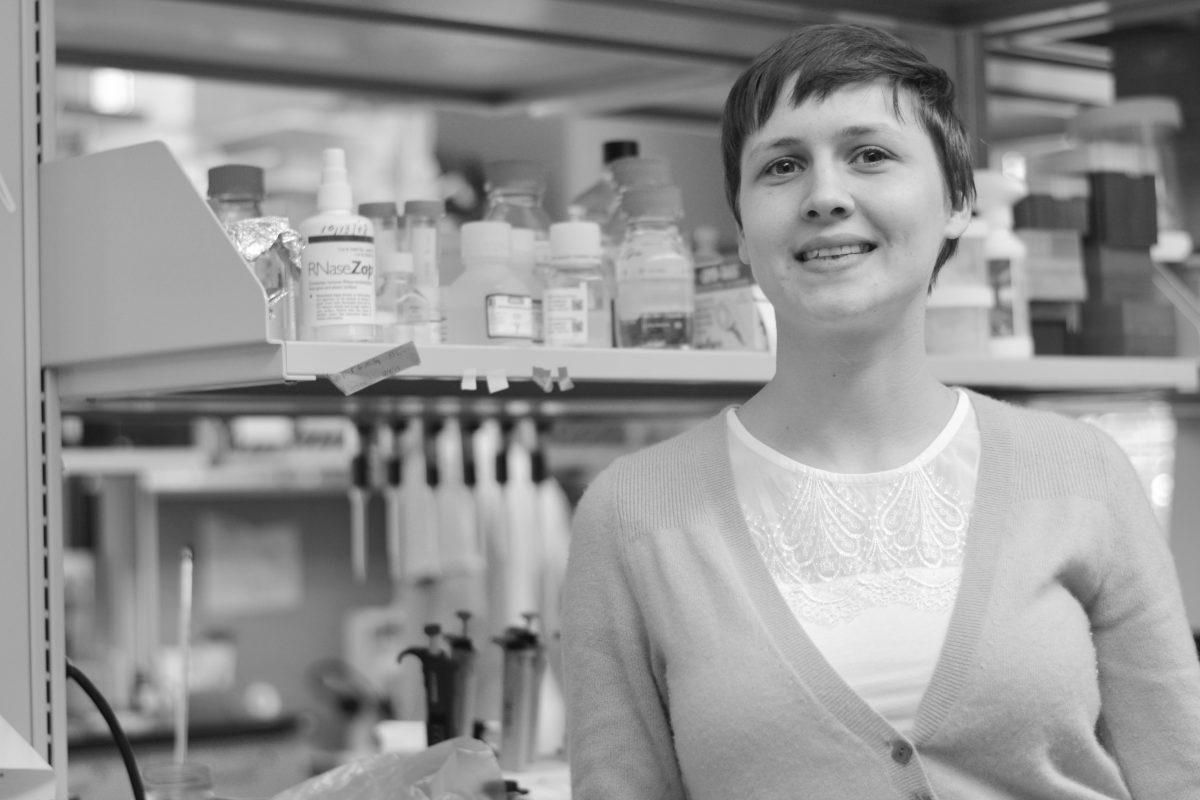Viruses, bacteria, funguses, infections — humans can be infected by more than 1,400 parasites. One parasite can be bad enough, but when someone becomes infected with two simultaneous infec tions, the game of treating the problem becomes more com plicated.
Emily Griffiths, a post-doctoral research scholar, is examining the relationship between humans and para sites.
Griffiths set out to look at questions such as, what hap pens when someone has two infections at one time? Can one treatment go after both infections? What happens when the drugs that were supposed to help one infec tion cause trouble with the other?
“What we wanted to do was look at which things were associated with one another and what way they might, in side of our bodies, be able to affect one another,” Griffiths said.
According to Griffiths, no one has ever looked at this type of human-parasite rela tionship before.
“We also showed that peo ple of multiple infections do worse. They’re more ill than people with just one,” Griffiths said. “We wanted to explore why that was, and why that might be based on what people know about these infections when they do co-occur.”
Building what Griffiths called a “giant, food-web like network,” they sorted out three different layers of parasite-human interaction: The bit of the human body the parasites were feeding on, the bits of the body that were infected and all the bits of the immune system that were reported to be fighting those infections.
“We counted all of the dif ferent ways, if you just take two parasites out of this web, that they could be con nected,” Griffiths said. “We did the analysis loads of dif ferent ways and pretty much always found that things had more potential to interact if they were infecting the same parts of the body.”
Griffiths said most of the time, to date, when people build models of these types of infections sharing an im mune response, they think about how one’s immune sys tem is going to start fighting the multiple infections. How ever, that doesn’t always seem to be the case.
“It actually seems that it’s more about how parasites are feeding off of the body,” Griffiths said. “It’s figur ing out what energy they’re taking, and how do they do that differently when there’s something else there. At that point they’ve got to compete for resources.”
The process for figuring these kinds of things out is a bit vague, according to Griffiths.
“People don’t really under stand it well at the moment,” Griffiths said. “It’s really something we need to look into a bit more.”
This study also suggests antibiotics and drugs that target an individual type of parasite might not efficiently treat both parasites a person is suffering from, Griffiths said.
“Both parasites might not be well targeted by a drug that is meant to go after one,” Griffiths said. “Maybe it’s a completely different kingdom animal. It’s hard to co-ad minister drugs in that way.”
Griffiths said the results of the study have pointed to the theory that, in order to fight multiple parasites, we could begin thinking about the sites of the body that are affected by the parasites and the metabolic-type therapies that go along with it.
“We question, ‘How can you just support this organ in a way that doesn’t feed the parasite but maybe helps your body resist the infec tion in that site?’” Griffiths said. “If both infections are co-occurring in the same site then that would be ideal.”
As an exploratory study, Griffiths said, they were look ing into what this human-parasite relationship meant for people in the United Kingdom and the United States when they become ill from having multiple infec tions where there is a problem of sharing the same site.
“No one had really looked at multiple parasites systems as a whole,” Griffiths said. “They just picked particu lar pairs. We want to know what happens if you take all the different infections that can co-occur. What does the food web look like? It was a really interesting study. Whatever the outcome we find it’s going to be inter esting. It’s going to show us something.”





